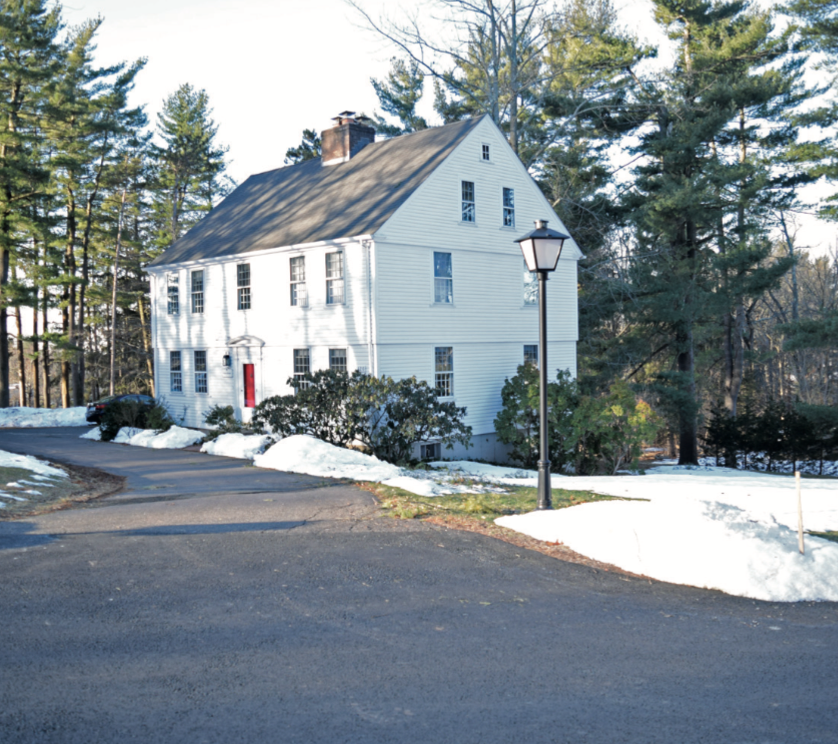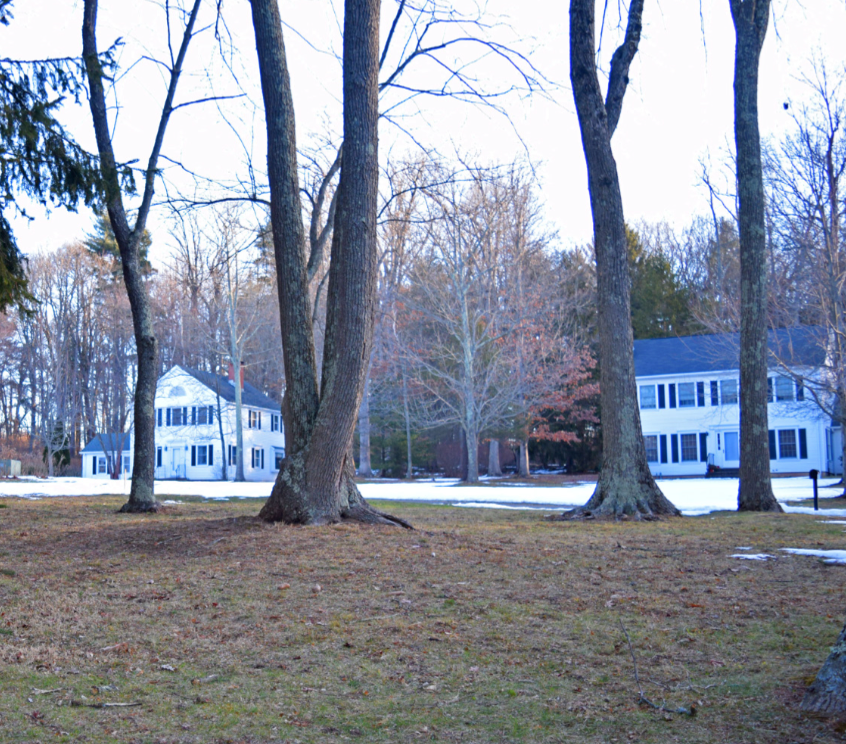
Cowles House, the oldest residence on Rosemary Lane, arrived at its current location after being torn apart and reassembled.
Walk up the path between the Science Center and Brownell, and you will find a row of neat, quintessentially New England houses that make up Rosemary Lane, a community of faculty residences, including that of Headmaster Dr. Alex Curtis. But do not be deceived by the apparent monotony of the line of white buildings. Closer attention reveals a rich history, a diverse array of inhabitants (both human and non-human), and an unexpected set of stories.
Originally, there were three student dorms on Rosemary Lane: McBee (1971-1997), Jessup (1971-1997), and Lowndes (1971-2003). Eventually, however, the need for more faculty housing led to the removal of those dorms from Rosemary Lane.
Most of the houses that stand on Rosemary Lane today were constructed in three main phases: the first few were built in 1988-1989 (with the exception of Cowles House, which was added in 1983), three more were added in 2006, and the most recent six were constructed in 2015.
The oldest residence is Cowles House, where English and HPRSS teacher Ms. Amy Salot and science teacher Ms. Fran O’Donoghue live. Built in 1790, Cowles was originally located in Meriden until a group of sixth-formers and their faculty overseers undertook the project to take it apart piece by piece and reconstruct it on Rosemary Lane in 1983. The Archives provided only the names of the original owner and builder: Mary Andrews and Joseph A. Blakeslee, respectively.
Representative of early New England architecture, Cowles is structured around a central fireplace, and features three other fireplaces around the house. “It creaks a lot in a charming way,” said Ms. Salot. The shelves filled with Ms. Salot’s American literature and history books enhance the early New England vibe.
Farther down the lane and at the end of a particularly long driveway, you will find David House, where the Farrell family lives. Built and dedicated in 2006, David House was part of a $1.6 million gift to build three faculty homes (the other two are Heather House and Leigh House). The architectural design was made by Classic Colonial Homes, which explains the house’s pleasantly antiquated aesthetic. Nonetheless, the front door of David House is made of glass, unlike the wooden doors of other buildings on Rosemary Lane, adding a modern touch to the otherwise traditional colonial home.
At the very end of the road magnificently lies the Curtis residence, Phoebe House, which was built in 2013. With its unique style — blue and gold touches, a large driveway, and a front garden — Phoebe House, which was designed by EDM Architecture, stands out from the rest of the Lane.
On the other end of the road, the Cobb family happily inhabits one of the newest homes, which has not yet been named. “The only thing that beats the new car smell is the new house smell,” said English teacher Mr. John Cobb, adding, “It’s great to move into a brand new place and have new appliances. The heating works!” The Cobbs had formerly lived in Ray Brown House on Beaumont Avenue for thirteen years, but it was torn down to make way for the new St. John Hall, and they moved to Rosemary Lane in October 2015.
Another bonus of living on Rosemary Lane is that the electrical lines are buried underground, not only adding aesthetic but also, more importantly, providing extra safety. Sixth Form Deans’ Assistant Ms. Wendy Marrinan, who lives on Rosemary Lane in Jack Davison House, is proud that the School invested in burying the lines: “When you take the time to do that, I’m all for it, because ice, snow, and wind can wreak havoc with power lines.”
Wildlife is abundant on Rosemary Lane. Deer are regularly sighted, and birdsong is a daily delight. Mr. Cobb has spotted cardinals, blue jays, red-tailed hawks, and various species of woodpeckers as visitors to the otherwise quiet street. His wife, Ms. Leslie Virostek, also observed a fox family teaching their cub, who was born last spring, the ways of hunting.
Some of the wildlife falls on the scary side. Rosemary Lane is home to a “really aggressive” fisher cat with an “otherworldly screech,” according to Mr. Cobb. A fisher cat is neither a fish nor a cat, but rather a small, carnivorous mammal with a reputation for viciousness.
English teacher Mr. David Loeb, who has been living in Fang House since 2015, shared his nerve-wracking encounter with a coyote. He described, “I was on a bicycle, and the coyote was not afraid of an English teacher on a bicycle. He stood his ground until I yelled, ‘ARRRRGHHHGHH,’ because I wanted to keep him from my little dog, Jeeves. Then he left — but not in a hurry.”
Although a lively community within its gated boundaries, Rosemary Lane is physically separated from the main campus. Most of the faculty residents relish the ability to escape from the hustle-bustle of Choate life. “When I look out my windows and I walk around the area, I feel as though I’m very far away from my worries and my job,” said Ms. Salot.
Mr. Charlie Long, whose yet-to-be-dedicated house is nicknamed “Checkpoint Charlie,” noted, “Rosemary Lane is nice because you have neighbors but they’re not too close, and you have the feeling of community because you see them walking their dogs.” The cross-country trail is conveniently located next to Rosemary Lane, providing the residents ample space for exercise and human-canine bonding.
Whether the house they reside in is historically significant or recently constructed, the faculty of Rosemary Lane enjoy their experience across the board. Perhaps it’s the deer, or the sunsets, or simply the quiet, but there is some aura about Rosemary Lane that clearly distinguishes it from other areas on campus while preserving the culture-defining feeling of Choate, and of home.




